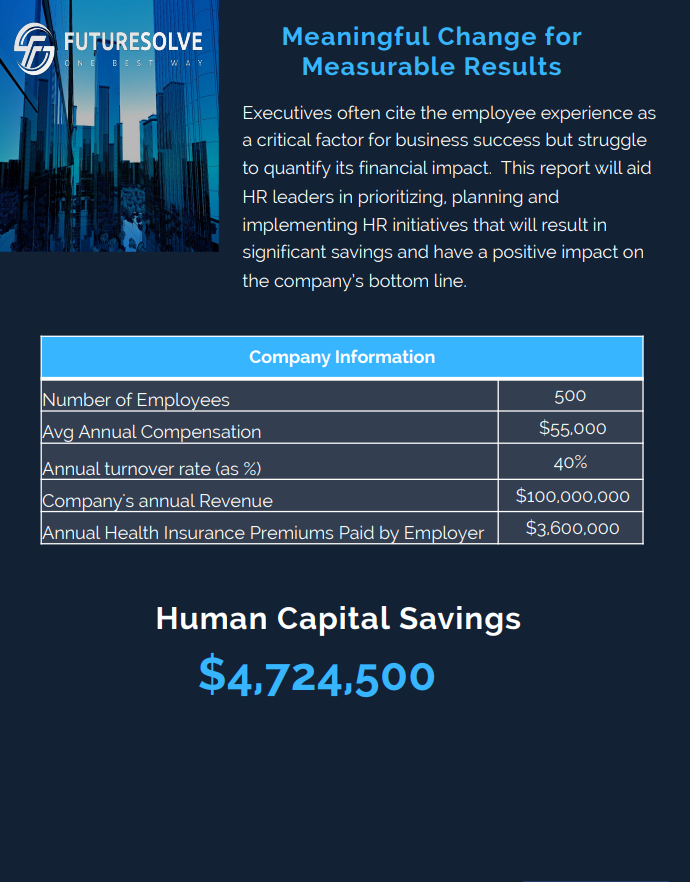As per a study report, it is estimated that around 3.6 percent of workers tend to leave the respective location of employment almost every month. Are you aware of the employee turnover cost of your organization?
While most organizations out there keep a proper track of the cost of employee turnover, most still fall behind to understand its importance and calculation in specific ways. It can be slightly overwhelming to accurately analyze the overall costs involved in employee turnover -especially if you are only starting out. Let us help you understand the same in detail!
What are Employee Turnover Costs?
Primarily, employee turnover is referred to as the total number of employees or workers leaving an organization over a specific period of time. It will include the employees who leave the organization voluntarily along with those who have been laid off or fired (involuntary turnover).
Some of the important points to know about employee turnover are:
- Turnover is used to analyze separation -employees leaving a company with a specific period of time. Separations can include everyone who might no longer be with the organization -irrespective of the reason.
- Turnover can be categorized into two types -voluntary (people leave the organization on their own and involuntary (employees are terminated or are a part of seasonal reduction in workforce or layoff).
- Employees who leave their jobs voluntarily are mostly seeking more income and improved benefits, an optimal work-life balance, career progress, or simply wish to get an escape from a toxic manager or the working environment.
- Turnover can be an expensive affair.
The employee turnover rate is defined as the one at which people tend to leave the organization. Usually, it is common for employees to come and go out of the organizational structure. This implies that the employee turnover rate is never going to be zero. However, it is recommended for organizations to maintain a lower employee turnover rate.
Why is It Important to Calculate Employee Turnover Rate Frequently?
Employee retention and turnover is expected to be calculated by the HR or Human Resources department of the organization. It is the responsibility of HR professionals to calculate the employee turnover rate, why the rate is high, and how to fix the same upon requirement. Upon calculating the employee turnover rates or costs quite often, it becomes possible to detect the origin of problems within your organization beforehand. Some of the reasons to calculate employee turnover costs frequently are:
- They Might Mount Up Quickly: One of the reasons why the employee turnover costs are discussed on the negative forefront is because they are expensive. It is immensely cost-effective to retain the employees than recruiting and training new candidates. If the employee retention rate of your organization is low, it will cost you significantly in the long run. The employee turnover cost is calculated over a period of time as the annual turnover rate. This analyzes the natural loss of the organization’s staff.
- They are a Sign of Some Issues Within the Company: When the employee turnover cost or rate is higher, it also indicates other aspects like reduced employee engagement and satisfaction levels. These core issues can lead to other consequences -including reduced productivity. In turn, it could make it difficult for your organization to achieve its successive goals. A poor employee turnover rate can indicate the HR that it should analyze the reason behind the problem.
What Makes Employee Turnover Expenses So Costly?
Employee turnover can be an expensive aspect as the organizations are expected to pay direct forms of exit costs when the employee will leave while incurring additional costs of recruiting and training new employees. Some of the direct exit costs are unused sick time, payouts for accrued vacation period, healthcare coverage contributions, severance pay, and higher unemployment taxes.
Some more reasons for the overall expenses are:
- Decreased Productivity: When an employee leaves the organization, the responsibilities are absorbed by the surrounding employees. This leads to adding more work to the already extended lists of work of other employees. Reduced employee morale can lead to decreased productivity. Therefore, it creates a cycle that could accelerate negative changes throughout the organization.
- Recruitment Costs: In the search for new candidates, organizations are expected to pay for job listings, sponsor events, recruiters, while establishing partnerships and offering referral bonuses. Expenses related to background checks, assessment tests, and other travel expenses linked with training candidates can also lead to increased recruitment costs.
- Onboarding Costs: Once the company has hired an individual to fill up the vacant position, the new employee is required to be trained and oriented effectively. Employee onboarding -requiring orientation, ramp-up time, and training, could take several months. To deliver outcomes at the same level as the individual they have replaced, new employees are expected to learn significantly. Assistance will come at an inherent cost.
Common Reasons for Higher Turnover
- Lack of Opportunity: Likely, employees who leave could not find opportunity for growth in the organization. If they feel a lack of motivation, they might leave.
- Poor Management: Poor management can affect much more than a team of employees. If the managers of the organization are difficult to deal with, it will have major effects on individuals working under them.
- Poor Cultural Fit: The organizational culture plays a vital role in determining employee turnover. When individuals do not adjust well to the respective culture, they might end up leaving.
- Lack of Resources or Training: For instance, if someone is expected to execute all accounting tasks without the presence of a software system, it could be daunting. The individual might get frustrated easily and think of quitting way easily.
How can HR Software Help You?
The presence of a fully-featured HR management software plays a vital role in minimizing employee turnover for multiple reasons. It makes it simpler for the HR department to gather as well as analyze data while tracking KPIs that help in reducing turnover. The software also makes it simpler for HR analysts to offer managers relevant answers for in-depth analysis.





























